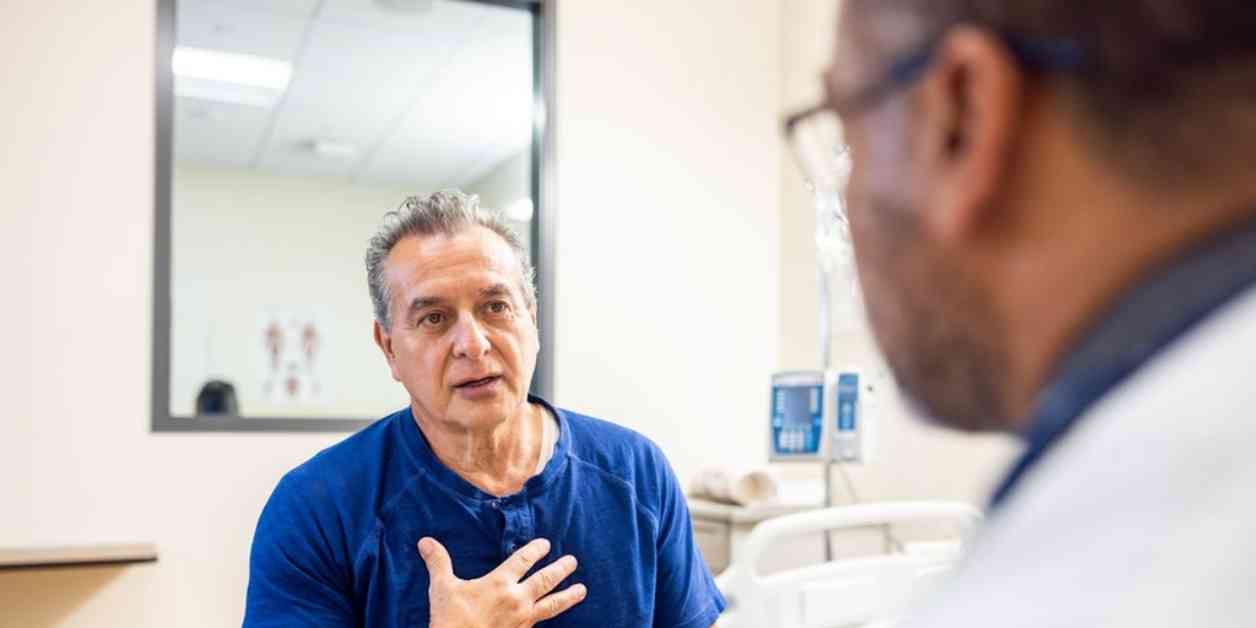Limited Availability of Cardiologists in Many US Counties: Study Reveals Alarming Care Gaps
A recent study published in the Journal of the American College of Cardiology (JACC) has shed light on a concerning issue facing many Americans – the limited availability of cardiologists in various U.S. counties. According to the study, nearly half of all U.S. counties do not have a practicing cardiologist on staff, leaving millions of residents without access to crucial heart-related healthcare services.
The Impact on Rural Communities
Rural communities are particularly hard-hit by this shortage of cardiologists, with Americans in these areas experiencing higher rates of cardiovascular disease and mortality. A May report from the Centers for Disease Control and Prevention (CDC) highlighted the disparities in healthcare access between rural and urban areas, noting that individuals in rural counties are more likely to die prematurely from heart disease that could have been prevented with timely intervention.
The study, conducted by Brigham and Women’s Hospital in Boston, analyzed over 3,100 counties across the country. Shockingly, it found that 46% of these counties lacked access to cardiologists, leaving approximately 22 million residents without the specialized care they need to address heart-related issues.
The Challenge of Distance
For patients living in counties without a cardiologist, the study revealed that they often have to travel long distances to seek the care they require. On average, patients in these areas had to travel 87.1 miles to reach a cardiologist, creating significant barriers to timely treatment, particularly in emergencies like heart attacks.
Dr. Bradley Serwer, a cardiologist and chief medical officer at VitalSolution, emphasized the critical importance of timely intervention in heart-related emergencies. He noted that when a patient experiences a heart attack in a rural area without access to cardiology services, the delay in receiving care can have devastating consequences, as every minute counts in such situations.
The Role of Cardiologists in Rural Healthcare
Cardiologists play a crucial role in diagnosing and treating cardiovascular conditions, making their scarcity in rural areas a significant public health concern. Dr. Haider J. Warraich, senior author of the study, highlighted the impact of this shortage on patient outcomes, emphasizing that access to cardiologists is essential for improving cardiovascular health and reducing preventable deaths.
Factors Contributing to the Shortage
Several factors contribute to the limited availability of cardiologists in rural areas, according to experts in the field. Dr. Serwer pointed out that many cardiologists prefer to practice in urban settings where they have access to a network of colleagues, specialists, and resources, leading to a concentration of these specialists in metropolitan areas.
Additionally, the challenges of recruiting and retaining healthcare professionals in rural communities, including issues with reimbursement, workload, and access to educational opportunities for families, can deter cardiologists from practicing in these underserved areas. The lack of subspecialists in rural hospitals further compounds the problem, as patients may not have access to advanced treatments and procedures for complex cardiovascular conditions.
Addressing the Healthcare Disparity
To bridge the gap in cardiovascular care between rural and urban areas, healthcare experts advocate for innovative solutions and policy reforms. Dr. Serwer suggested implementing creative staffing models to provide coverage in underserved regions, such as the seven-day on, seven-day off schedule utilized by VitalSolution to ensure consistent care for patients in rural hospitals.
Telemedicine also holds promise as a technology-based solution to improve access to cardiology services in remote areas. By leveraging telehealth platforms, healthcare providers can remotely diagnose and treat patients, reducing the need for long-distance travel and enhancing the efficiency of healthcare delivery in rural communities.
Furthermore, policy changes that expand internet connectivity for telemedicine and increase health insurance coverage for remote consultations can help overcome barriers to accessing cardiology services in underserved areas. By incentivizing healthcare professionals to practice in rural settings and supporting rural hospitals financially, policymakers can strengthen the healthcare infrastructure in these regions and improve patient outcomes.
Empowering Patients for Better Health
In the face of limited access to cardiologists, patients in rural areas can take proactive steps to manage their cardiovascular health and seek timely care when needed. Establishing relationships with primary care providers, understanding chronic medical conditions, and prioritizing lifestyle modifications such as healthy diet, exercise, and medication compliance are essential strategies for reducing the risk of heart disease and improving overall health.
For individuals with existing cardiac conditions, creating a plan for accessing cardiac care in emergencies and advocating for improved healthcare resources in their communities can help mitigate the impact of the cardiologist shortage. By being informed and proactive about their health needs, patients can navigate the challenges of limited healthcare access and work towards better cardiovascular outcomes.
Looking Ahead: A Call for Change
As the study underscores the urgent need for policy reforms and innovative solutions to address the disparities in cardiovascular care, healthcare professionals, policymakers, and communities must collaborate to ensure equitable access to essential services. By investing in rural healthcare infrastructure, promoting telemedicine initiatives, and supporting healthcare providers in underserved areas, we can take significant steps towards improving public health outcomes and reducing preventable cardiovascular mortality.
In conclusion, the shortage of cardiologists in many U.S. counties highlights the critical need for comprehensive strategies to address healthcare disparities and enhance access to specialized cardiac care. By leveraging technology, implementing creative staffing models, and advocating for policy changes, we can work towards a more equitable healthcare system that prioritizes the well-being of all Americans, regardless of their geographic location.




